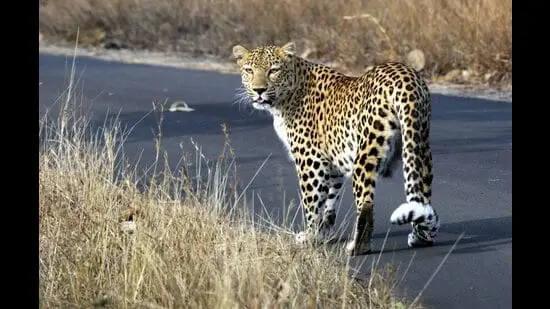
A fresh leopard sighting at Pune Airport early Tuesday has once again pushed the forest department to intensify surveillance and revisit its preparedness for managing increasing human–leopard encounters in the city.
Airport staff reported spotting the leopard in the early hours, prompting forest officials to step up monitoring. Assistant Conservator of Forests Mangesh Tate said surveillance has been increased to ensure public safety and track the animal effectively.
The airport incident is part of a broader pattern of rising leopard sightings in Pune and Pimpri-Chinchwad. Confirmed movements have been recorded in Fursungi, the airport area, and most recently at Sindh Society in Aundh. The forest department has earlier documented sightings in the hill belts of Pashan, Baner, Katraj and surrounding areas. Wildlife scientists have repeatedly warned that the Junnar landscape may have exceeded its leopard carrying capacity, pushing some animals toward urban centres such as Pune and Solapur.
The growing presence of leopards – not just in Junnar and Shirur but also along the periphery of the Pune and Pimpri-Chinchwad city limits – has forced the forest department to look inward only to identify major shortcomings in infrastructure, human resources and public awareness. Officials say that the biggest challenges continue to be low awareness among residents and limited skilled manpower to respond to instances of leopard-human conflict. Meanwhile, wildlife researchers have called for a comprehensive study of leopard populations outside forest areas to help formulate an effective action plan for conflict mitigation.
According to officials, the forest department urgently requires upgrades in rescue infrastructure, monitoring and capture equipment. Tackling misinformation — especially fake videos and photographs circulating on social media — has also emerged as a growing challenge. Additionally, stronger inter-departmental coordination and public awareness are needed to prevent panic or mishaps during wildlife sightings. To address these gaps, a detailed proposal seeking essential conflict mitigation equipment has already been submitted for Pune city.
Tate said, “We are taking all necessary steps to strengthen our capacity for managing wildlife conflict. As part of this, we have sought equipment, including 12 transport cages, two thermal drones, ladders, 250 trap cameras, 300 trap cages, and other essential gear. The proposal was submitted to the forest head office in Nagpur last month, and we are awaiting further updates.”
Wildlife scientists have long cautioned that the Junnar landscape may have exceeded its leopard carrying capacity, forcing some animals to disperse south and southwest toward urban centres such as Pune and Solapur. The pattern of frequent sightings now appears to support this assessment. Given the current situation, it has become crucial to scale up citizen awareness to curb the spread of fake videos, photographs and AI-generated images that often go viral and fuel unnecessary panic, not to mention delay the department’s response in genuine emergency cases, Tate said.
Experts say infrastructure upgrades alone will not be enough.
Wildlife researcher Kumar Ankit from the Wildlife Institute of India said there is an urgent need for an advanced study on leopards living outside forest areas.
“We have conducted a study in Junnar between 2019 and 2024. The study gave us baseline data and various aspects involved in the leopard-human conflict. But for effective management, we still need advanced studies, particularly about the leopard population outside the forest areas, change in behaviour patterns and other crucial trends, as this will help us form effective management policies,” he said.
With sightings increasing across the city and recent incidents such as the airport sighting drawing public concern, officials said coordinated action, stronger community awareness and scientific intervention are now crucial to prevent conflict and ensure safe coexistence.
